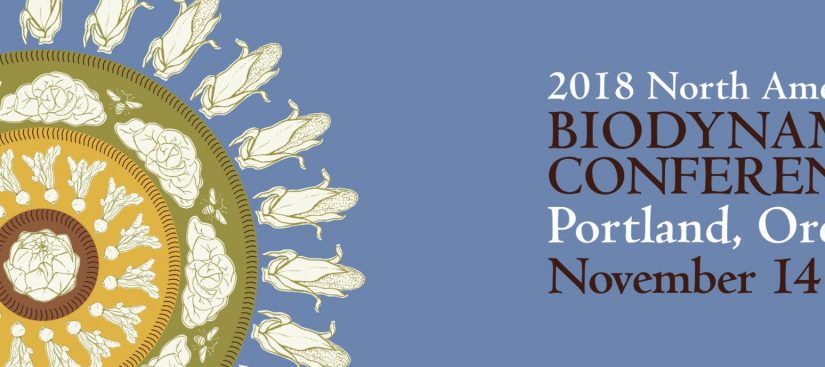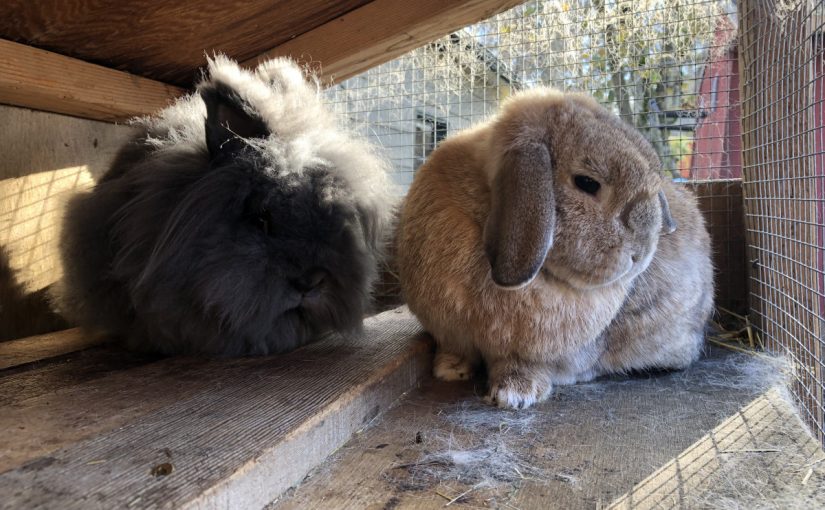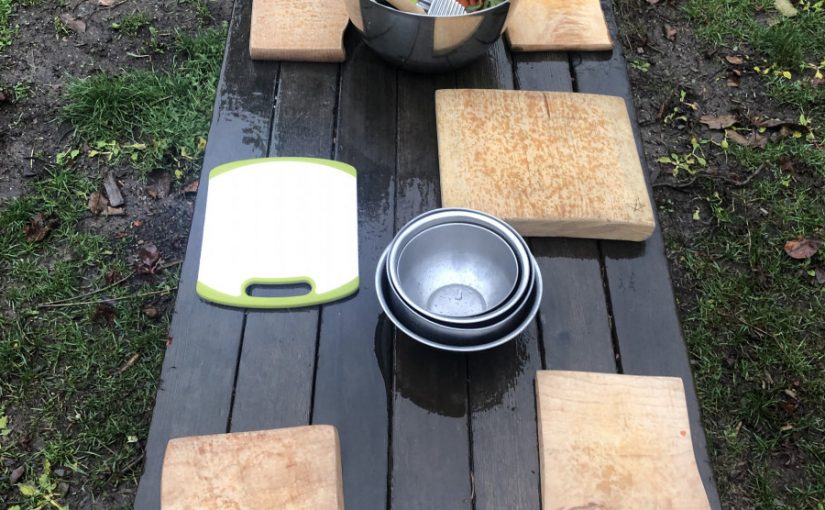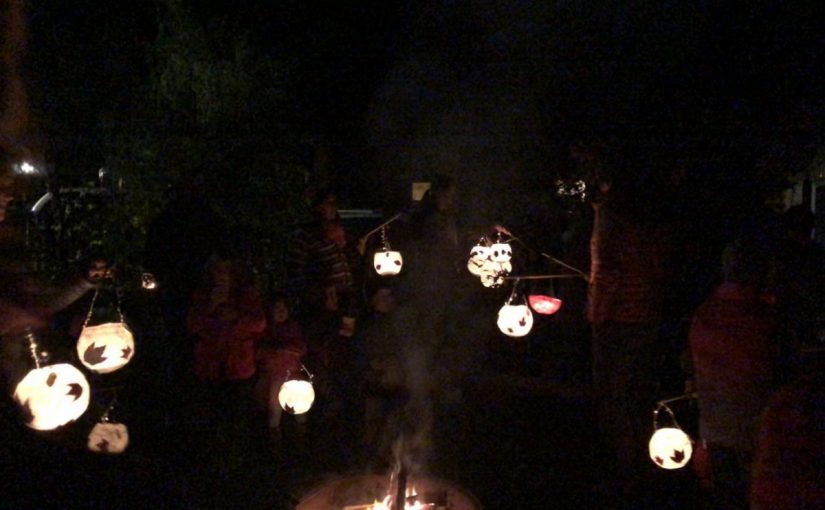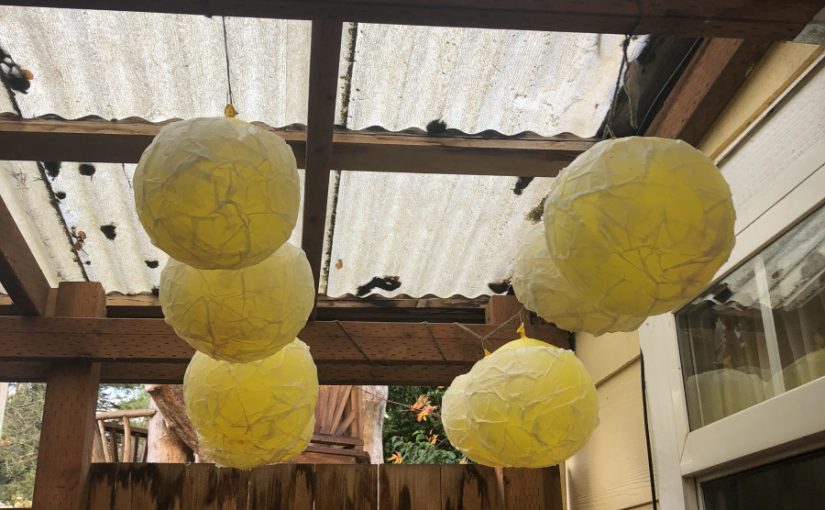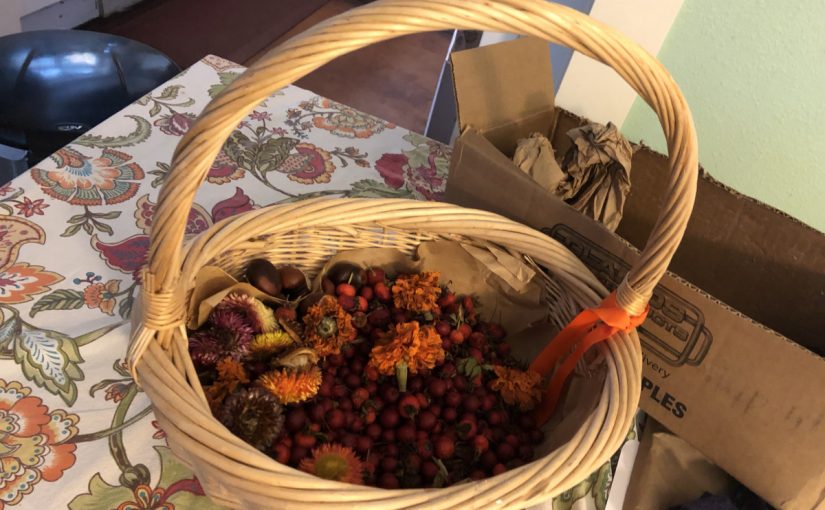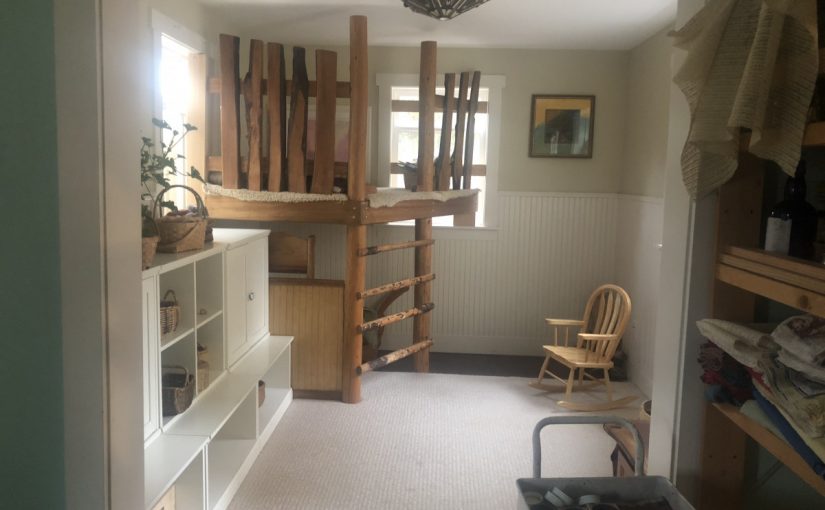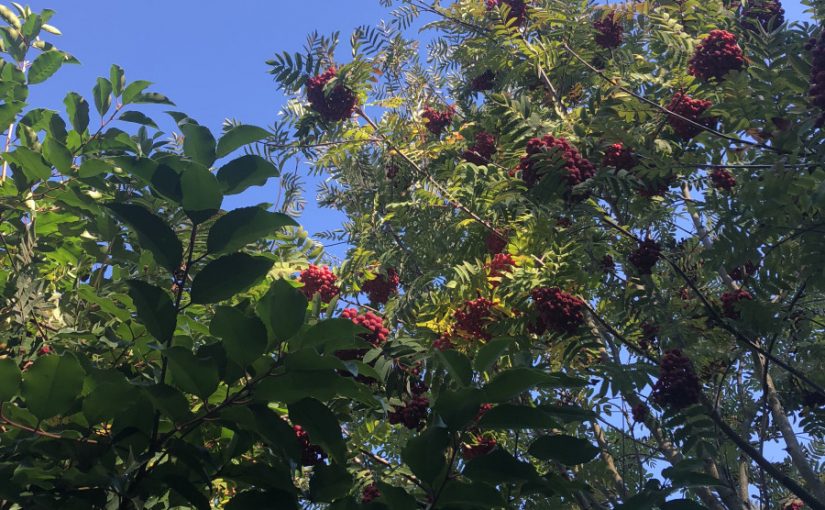Week 8: I attended the Biodynamics Conference in Portland, Oregon. This conference allowed me to explore Rudolf Steiner’s philosophies, which pertain to Waldorf education. As a reflection, I looked around me when I sat down at the keynote speaker. Something I did not see was very many young people, or people of color. Perhaps it was because it is Portland, one of the whitest cities in the US, or maybe because Biodynamics does not speak to those people? This year there was emphasis on social justice and inclusion but the solutions were vague. I found myself having a lot of questions about land access and economics. Can we create a food system that is within the system of capital? Many speakers at the conference seemed to answer these questions doubtfully. Many farmers are trying to make money for their families, and are already poor. It seems like we need to create a system where food access shouldn’t be about having enough money to do so, but it seemed like those concerned with Biodynamics did not see themselves able to create food access themselves. They seemed to be very concerned with connecting themselves and their customers to Biodynamic food, but where does that leave people who cannot afford it?
Author: moosha02
Final Self Evaluation
Academic Statement
https://docs.google.com/document/d/1_hwWQdAt8KomHP00quSBQP-UOS0qaUWj8Wx-gALzf4U/edit
Birthday Day
Week 10: Witnessing a child’s birthday is special. This week, little Aurelia turned 4! Her family is invited to share cake and four special memories of each of her years. Aimee loves to make her children feel special, especially on their birthday. We made a pumpkin cake from one of Aimee’s pumpkins for the fall season. Today was my last day at Bird Song for Fall quarter, I am excited to continue to visit through the Winter & hopefully into Spring.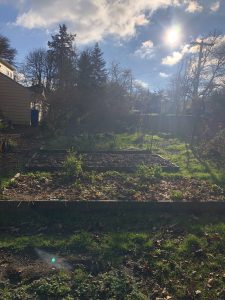 Right now, the garden beds are resting but soon enough it will be spring where we will begin to get the garden ready to plant with the children. Gardening with Young Children has helped me to understand how children can learn in the garden, and learn about themselves. The book lists activities that you can do with the children so I am hoping that we will be doing some of these activities with the children, even in Winter.
Right now, the garden beds are resting but soon enough it will be spring where we will begin to get the garden ready to plant with the children. Gardening with Young Children has helped me to understand how children can learn in the garden, and learn about themselves. The book lists activities that you can do with the children so I am hoping that we will be doing some of these activities with the children, even in Winter.
Vegetable Chopping & Story Time
Week 9: I arrived at Bird Song and started the morning by ironing a silk. I had never used an iron before, yet I felt like I should know how. Instead of acknowledging that I could learn, I felt as though I was at a disadvantage and had to learn on my own. I thought to myself, everyone knows how to use an iron, why don’t I? This is an example of the way that our society operates, we think of ourselves as individuals. Instead of learning from each other and recognizing 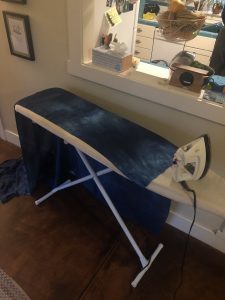 that we will never know how to do everything, we have these unobtainable expectations that we are supposed to know how to do certain tasks at a certain age. Then we tend to look for someone to place the blame on, if we do not know. In reality, this is where learning can occur to benefit everyone. I usually feel like a burden if I do not know something that I feel like is a life skill because then I feel like I am placing the burden on someone else to teach me instead of treating it like a learning curve. I hope that children can be raised to understand the importance of learning as a community. Children are individuals with strengths and weaknesses but this is where community can come together. Instead of being upset at what I do not know, it is more productive to just learn!
that we will never know how to do everything, we have these unobtainable expectations that we are supposed to know how to do certain tasks at a certain age. Then we tend to look for someone to place the blame on, if we do not know. In reality, this is where learning can occur to benefit everyone. I usually feel like a burden if I do not know something that I feel like is a life skill because then I feel like I am placing the burden on someone else to teach me instead of treating it like a learning curve. I hope that children can be raised to understand the importance of learning as a community. Children are individuals with strengths and weaknesses but this is where community can come together. Instead of being upset at what I do not know, it is more productive to just learn!
At Bird Song, there is always plenty to do in the garden. I have found myself raking leaves and creating fairy houses with the little ones. We prepared and chopped the veggies underneath the canopy because of the downpour of rain. During the rainy days it may be hard to convince the children to stay outside. It is important that we acknowledge those children’s feelings but also keep them living within the daily rhythms. On Monday, we chopped the veggies underneath the canopy because of the downpour. As we got the children ready for indoor time, one of the youngest; Cohen, jumps into my arms and I am reassured that this little environment is a home for now. I have decided to continue through winter quarter at Bird Song because I have completely fell in love with the children. After painting, I clean the water cups, brushes and sponges and I am asked to read a story. Children start to gather as I read about a friendly poor old man who gives himself to his community, and never asks for anything in return. A cheap grumpy governor tells him that his house will get torn down because it is falling apart and then his community offers to rebuild the house for him as a surprise! Children continue to pile on top of me on the small couch, all trying to see the pages. I am warmed by their cuddles and read two more stories to them. This is the place I am supposed to be!
Lantern Walk
Week 8: As winter is getting closer, we are moving into a season of darkness. Lantern walk is a way for us to bring light into our community in the darkness of autumn. Each child is using handmade lanterns with a tea light inside. Families gathered around the fire to keep warm while eating pumpkin bread and sipping hot apple cider.
We lit lanterns then walked along the path of the neighbor hood singing:
“I go outside with my lantern, my lantern goes with me
Above the stars are shining bright, down here on Earth shine we.
The cock does crow, the cat meows, la bimmel, la bammel, la boom.
‘Neath heaven’s dome till we go home, la bimmel, la bammel, la boom.
I go outside with my lantern, my lantern goes with me
Above the stars are shining bright, down here on Earth shine we.
So shine your light through the still dark night, la bimmel, la bammel, la boom
‘Neath heaven’s dome till we go home, la bimmel, la bammel, la boom.”
“Shine our light in the still dark night”. Lantern Walk stems from an old European tradition of St. Martin. Martin was a knight that came across an old beggar on his way home and used his sword to cut his robe in half to give to him. That night he dreamed that the beggar was actually his lord, the Christ. Martin then gave up his warring ways and became a servant to the people. He knew that if he served his people he would then serve the sacred in them.
A peaceful and gentle celebration of the light in the community around us.
Autumn Leaf Lantern Making
Week 7: Today I helped to rake leaves to build a pile for the children to jump in. It’s autumn! Aimee collects autumn leaves for paper lanterns to prepare for next weeks lantern walk. During lantern walk, the children carry illuminated lanterns through the neighborhood.
Celebrating seasons is important at Bird Song Children’s Garden because it creates an environment where the children’s bodies are connected to the earth. All of the songs, food, art and stories are celebrating the seasons. I am curious to see what winter brings to the school and how we will celebrate the chilly season since we spend a majority of the time outdoors.
Pumpkin Art Day
Week 6: Trees are shedding their leaves at Bird Song Children’s Garden, and the rain is beginning to become climate again. The children bundle in every layer possible, but the rain does not stop them! Some of the them are actively preparing the garden for the change of season while others sew witches hats on their finger puppets. It is yet another art painting day at Bird Song but this time the children are painting pumpkins.
Harvesting Carrots & Autumn Festivities
Week 5: I start each Monday by cutting the corners of watercolor paper in preparation for painting. This gives children a nice canvas to create their art to then bring home.
Today while I was in the garden with the children, we harvested at least two dozen carrots. Since the winter season is approaching and it isn’t getting colder, Aimee is working on cover cropping many of the garden beds. I also raked some leaf litter and helped the children to cut vegetables for lunch. I think my favorite part about this year has been singing autumn songs and playing festive games. One of them is a game where we are all squirrels. One child hides their eyes and the other hides a hazelnut underneath a child and they take turns guessing who the nut is under them. Aimee had a wonderful suggestion to visit a traditional preschool to see what makes this preschool “Waldorf”. It would be a beneficial perspective to see.
Autumn at Bird Song
Week 4: As the seasons are changing, so are the little children at the preschool. They are welcoming the autumn by recognizing the plants in the garden and appreciating the changing colors. This week while I was out in the garden I helped the children till the soil with some shovels to get part of the garden prepared for cover cropping. The area was previously growing potatoes that we had harvested a few weeks prior. Through Ecological Agriculture, the other program I am taking at Evergreen 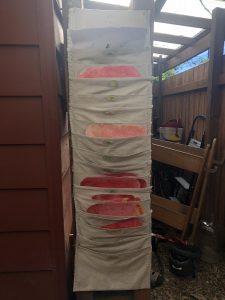 we are investigating methods to implement cover cropping into larger farm systems. It is lucky that my two programs are able to connect so that I am able to get a holistic learning experience and apply this in the children’s garden. The children get to pick kale to have at lunch with their coconut rice and vegetables and also helped Aimee to create an autumn bouquet to have inside the house. There are songs that the children sing each week, some that I am familiar with but also most are new that I haven’t heard before. I am having a meeting with Aimee this next week to make a list of questions to ask about her teaching. I was not able to make it to their harvest festival because of a field trip but they present seasonal festivals where they preform songs and dance.
we are investigating methods to implement cover cropping into larger farm systems. It is lucky that my two programs are able to connect so that I am able to get a holistic learning experience and apply this in the children’s garden. The children get to pick kale to have at lunch with their coconut rice and vegetables and also helped Aimee to create an autumn bouquet to have inside the house. There are songs that the children sing each week, some that I am familiar with but also most are new that I haven’t heard before. I am having a meeting with Aimee this next week to make a list of questions to ask about her teaching. I was not able to make it to their harvest festival because of a field trip but they present seasonal festivals where they preform songs and dance.
